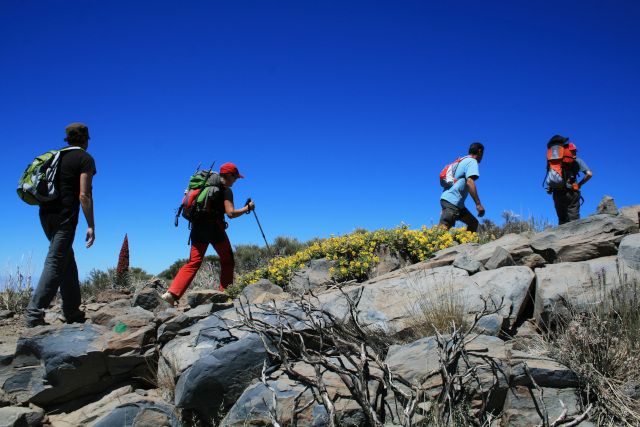
[dropcap]I[/dropcap]n a pre-pandemic world, Irish mountain trails and hiking routes were dismissed for foreign travel and overseas attractions. We – by virtue of the endless “better” options abroad – became unaccustomed to the beauty and vitality that lay right on our doorstep.
For many, the pandemic has been the catalyst for rediscovering our closest surroundings and connecting to the ideas of home and belonging that it connotes to.
Hiking, as a result, has been somewhat of a saving grace, the ultimate antidote to the flurry of lockdown restrictions we are all too familiar with.
This is reflected in the rise in online searches for “hiking trails near me” and searches for hiking gear reaching almost 100 per cent in early August 2020.
Online hiking communities have been reaping the benefits of this heightened interest too, with Hiking Ireland being “one of the most successful, active and largest communities of its kind in Europe” according to its platform.
With over 90,000 members ranging from hiking pioneers to beginners, what fundamentals does Hiking Ireland recommend to its members?
“We hope for the best but we should be prepared for the worst,” Dariusz Weclawek, creator of the online community told The College View.
The outcomes of a hike can change with a flip of a coin; Weclawek described the ideal scenario where the sun is shining and following the crowd, you set out to climb the western mountain range and the highest peak in Ireland, Carrauntoohil.
What begins as a thrilling trek can end with nightmarish results; “You could get lost due to no navigation skills, slip and hurt your ankle because you wore unsuitable footwear and not be able to call for help because your phone battery died.”
Weclawek also emphasised the importance of weather-awareness. Despite a reassuring sun at the start of a trail, packing extra layers, a waterproof jacket, waterproof over-trousers and a hat and gloves is imperative.
“Consider the average temperature drops 1°C per every 100 meters of the elevation gain. Carrauntoohil is over 1000 meters high with over 900 meters of elevation gain. If there is 17 degrees on the bottom of the mountain, what will it be on the top?”
Other essentials include food and water, a map, torch and a first aid kit. Bringing an external power bank is also advisable if you plan on using your phone as your navigation tool.
For those just starting out, Weclawek recommended taking the difficulty and length of the trail into consideration and matching that to your navigational awareness and capability levels:
“If you have no navigation skills, your safest bet would be to join a group of hikers or a hiking club. If you go on your own or with other inexperienced hikers, choose waymarked trails.”
For those ready to push the boundaries and advance a step further, considering a mountain skills course or learning how to use a map and compass are amongst some of Weclawek’s recommendations.
The beauty and lure of the Irish landscape is a stamp of our identity; the green fields, the rugged west and the fresh coasts. Maintaining that standard should be a humble duty of ours, which makes the “leave no trace” philosophy one that all hikers should be led by. “Keep your impact on nature at a minimum,” Wecalwek said.
With a new wave of national restrictions recently eased, a wealth of hiking opportunities becomes available. Take it as your informal invitation to explore the trails, walks and routes you’ve ‘been meaning to get around to’.
As Weclawek summarises: “Enjoy every moment of being out in nature. Appreciate it. Stop, breath in, breath out, look around and take it all in.”
Author: Trudy Feenane
Image Credit: Creative Comms



